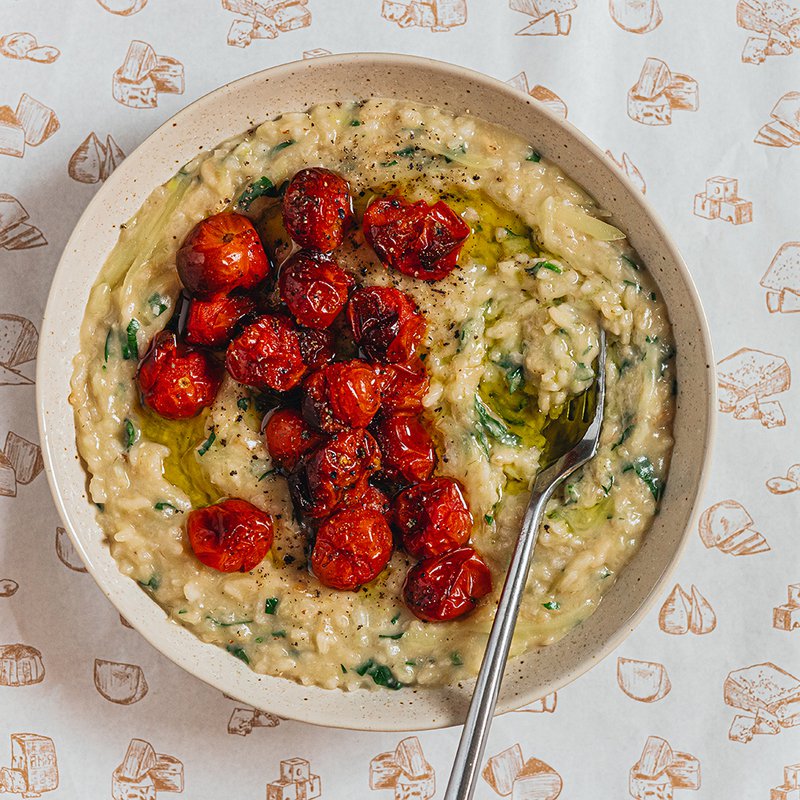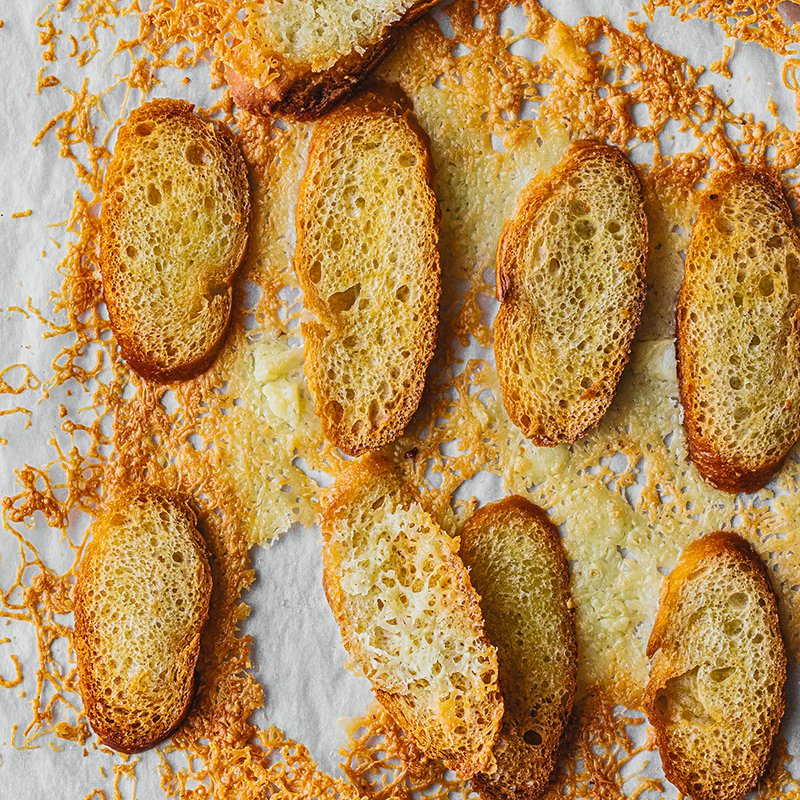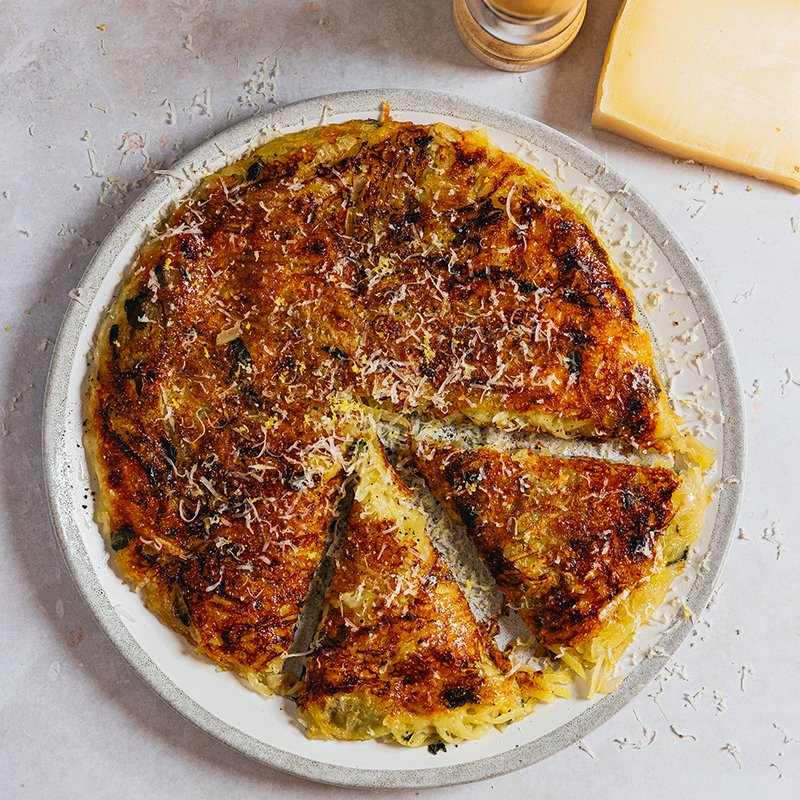CACIOCAVALLO

Caciocavallo, in Italian, translates to ‘cheese on horseback’, a reference to this product’s 14th century origins in the Puglia region, where it was formerly made from mare’s milk. These days it’s a cow cheese, which can be mild, soft and pliable such as mozzarella when young. The ‘grotta’ variation takes on a harder texture and a deeper, earthier, borderline spicy flavour when aged in caves for a minimum of six months.
MILK: Pasteurised cow’s milk
AROMA: Lactic, herbal, fruity
TEXTURE: Creamy, pungent
PAIRING SUGGESTIONS: Honeys, jams, croutons
GORGONZOLA

Soft enough to spread from the distinctive green pack, this classic Italian blue cheese is produced under the auspices of the Zanetti family – fifth-generation cheesemakers with longstanding facilities in Lombardy, where Gorgonzola was first created in the town of that name at least 1,000 years ago. It’s made with full-cream cow’s milk, lactobacillus and other selected moulds, developing a distinctive marbled network of deep blue veins across the paste and a famously powerful nose over long months of ripening.
MILK: Pasteurised cow’s milk
AROMA: Pungent, intense
TEXTURE: Soft, marbled, deep-veined
PAIRING SUGGESTIONS: Risotto, sweet jams, almonds
ASIAGO
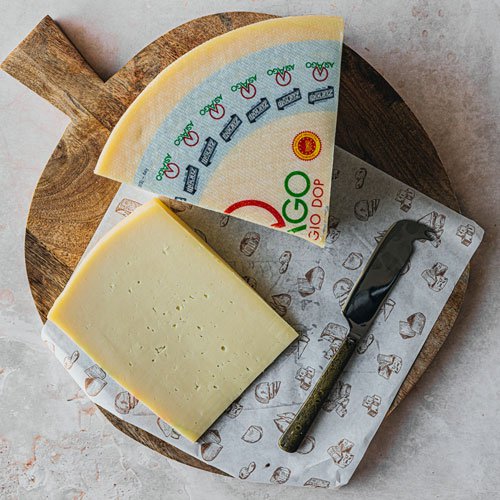
Cheese has been made on the Asiago Plateau since before Italy was Italy, and the name has been renowned for that reason for more than 1,000 years. Sheep milk was the base for earlier dairy products, but this particular specimen is cow-derived, and these younger variations tend to be smoother-paste, with small Swiss-style holes riven through a straw-coloured interior. The flavour is buttery and mildly spicy, adding a little pop to foods when grated over or melted in.
MILK: Pasteurised cow’s milk
AROMA: Nutty, buttery
TEXTURE: Smooth, holed
PAIRING SUGGESTIONS: Salads, soups
TALEGGIO

Here’s an ancient one – a cheese that has been dated to the 9th century, when it was made with the milk of tired cows (therefore high in butterfat content) on the Alpine cattle migration route across the Lombardy region. Turned, stored and salt-rubbed in such a way during maturation that the rind develops a deep-moulded terracotta pattern, the finished, square-shaped cheese even looks like some arcane artefact from a tomb, and historians say it was once traded as a form of currency. The texture and flavour are fittingly and famously complex, with a single bite conveying fruit, nuts, and even a certain meatiness.
MILK: Pasteurised cow’s milk
AROMA: Grassy, salty
TEXTURE: Creamy, pungent
PAIRING SUGGESTIONS: Salads, fruits, polenta
AGED PECORINO WITH FIG

The Rocca Toscana Formaggi dairy produces a winning range of white-textured, fragrant and flavourful cheeses in line with Tuscan traditions, but this one is a pretty unique proposition made to its own innovative recipe. Figs are added to a fresh ewe’s milk paste during processing to meld with the pecorino as it ages, resulting in a rich, punchy, and deeply seasoned final flavour.
MILK: Pasteurised ewe’s milk
AROMA: Lactic, herbal, fruity
TEXTURE: Creamy, pungent
PAIRING SUGGESTIONS: Honeys, jams, croutons
BEPPINO OCCELLI – PEPPE NERO E BACCHE

The Occelli family have been at this for more than half a century, making butter and cheese from the premium cow (and sheep) milk of mountain pastures across Langhe and Piedmont. This particular blend of both milks is aged for a minimum four months in the Valcasotto caves, maturing on racks of wood from the adjoining valley. Thick grains of black and pink pepper embedded in the mixture enrich the aroma and flavour, and the finished product is hard, compact and nicely spicy through a deep, rich ochre centre.
MILK: Pasteurised cow and sheep’s milk
AROMA: Pungent
TEXTURE: Compact, firm
PAIRING SUGGESTIONS: Chestnut honey, jam
MONTASIO PDO
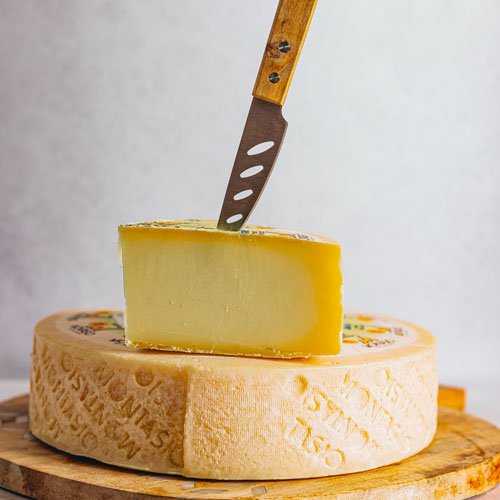
The name Montasio derives from the high plateau on which abbey-bound Benedictine monks of the 13th century refined their cheesemaking techniques from the rougher artisan practices of shepherds in the surrounding Julian Alps. Aficionados agree that the mild, fresh flavour of young Montasio is good, but every day of maturation past the minimum 60 days only tends to improve that mellow, fruity taste as it darkens and hardens the paste. Often grated or melted into pasta dishes or omelette, it’s no less ideal served with pears or black olives.
MILK: Pasteurised cow’s milk
AROMA: Nutty, buttery
TEXTURE: Smooth, holed
PAIRING SUGGESTIONS: Salads, soups

